Facing each other across Spadina Avenue just north of Adelaide, the Tower and Balfour Buildings frame a striking entryway into Toronto’s Fashion District.
Previously known as the Garment District, the neighbourhood was home to many of Toronto’s textile workers, who were predominantly Jewish immigrants.
Masterpieces of Art Deco architecture, the Balfour and Tower buildings were originally built to house those garment businesses and their showrooms, raising the prominence of the industry, and the city with it.
Designed by Benjamin Brown in the late 1920s, their towering elegance was symbolic of Toronto’s transformation into a modern metropolis — a financial, cultural and transportation hub with a swelling population over 200 000.
That elegance extended to several other Brown-designed buildings nearby including The Commodore on Adelaide, The New Textile Building on Richmond (now an OCADU building) and the Hermant Building at Yonge and Dundas Square.
Despite defining the city at a critical point in its history, Benjamin Brown has remained relatively unknown.
At a time when people weren’t interested in Toronto’s architectural history, let alone the work of a single architect, Brown’s entire collection of drawings were forgotten about in the architect’s garage and left to deteriorate.
When Brown died, he left the collection to fellow architect Jim Levine, one of the only people who recognized the value of the work.
The Ontario Jewish Archives took over the collection in the 80s and has painstakingly restored it, ensuring that a valuable archive of drawings that document the emerging modernity of Toronto was not lost. Highlights of the collection are now on view in an exhibit of Benjamin Brown’s work at the Urbanspace Gallery on the ground floor of 401 Richmond, until April 23.
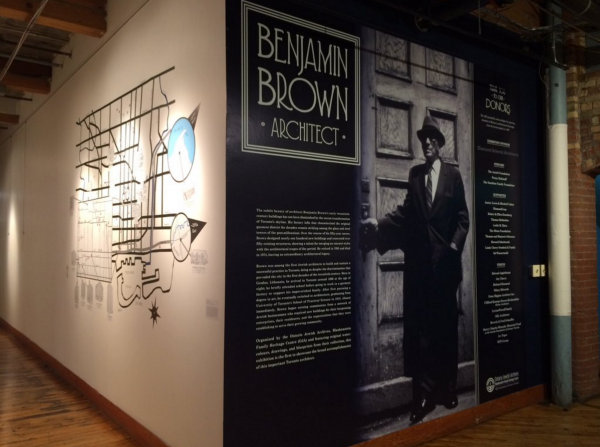
The exhibit is an opportunity to get an up-close view of Benjamin Brown’s expertly executed hand-drawn plans and renderings. Brown was a master of lines. His incredibly detailed drawings even include the buildings’ ornamental windows and decorative stonework.
Brown’s drawings are also poignant portraits of Toronto in the 1920s and 30s, where the aerodynamic shapes and sleek lines of Art Deco and Art Moderne dominated architecture and fashion. In the cinematic rendering of the Tower Building – a night time, rainy scene that is a far cry from today’s style of renderings – Spadina is bustling with crowds in stylish coats as streamline automobiles motor by.
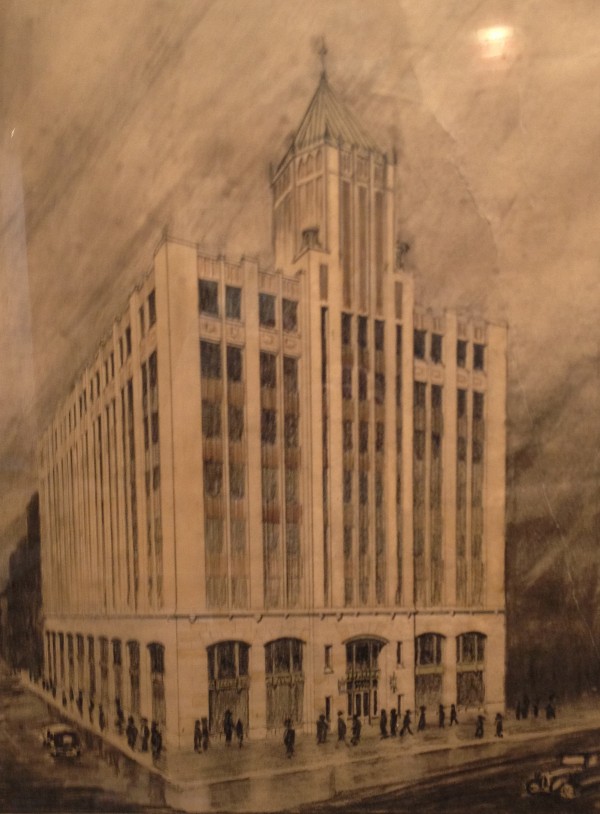
Brown was one of the first Jewish architects to build and sustain a successful practice in Toronto despite the discrimination within the city in the early 1900s. As a result, he was the architect of many spaces for the Jewish community, including Beth Jacob Synagogue (today, a Russian Orthodox Church) and the Primrose Club on Willcocks, a social club for Jewish men (today, it’s the University of Toronto’s faculty club).
As an artist and urban geographer, I was delighted to participate in the exhibit by illustrating many of Brown’s best known buildings, tracing over his lines and creating a map showing the geographic expansiveness of his life’s work. Indeed, Benjamin Brown has hundreds of commissions spread throughout the city.
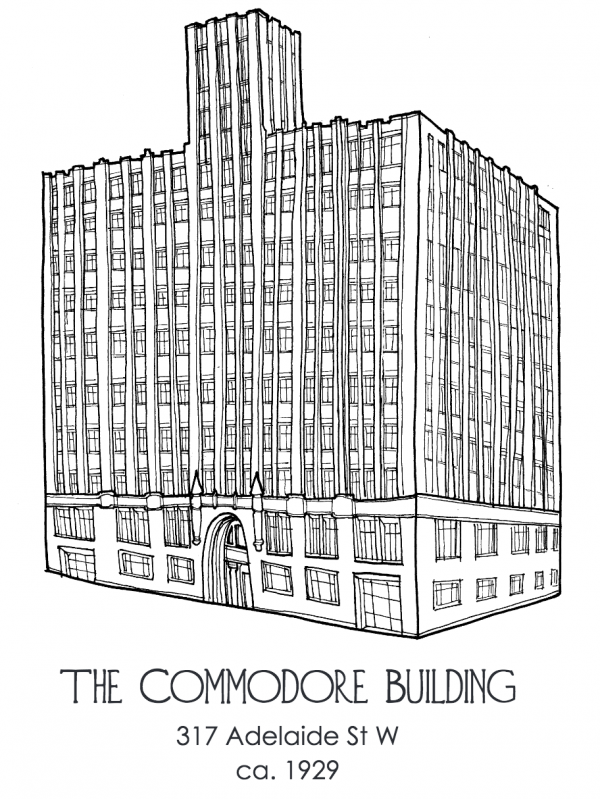
Looking at Toronto through the lens of a single architect is an opportunity to make connections between the city’s disparate neighbourhoods and styles. Benjamin Brown’s designs range from the Art Deco towers downtown to utilitarian garages in the west end, storefronts on Bloor and Georgian, Tudor and Colonial Revival houses in midtown.
Through the work of Benjamin Brown, an intelligible thread runs through Toronto, a city indebted to the grandeur he helped established at the turn of the twentieth century.
See the exhibit of Benjamin Brown’s work at the Urbanspace Gallery on the ground floor of 401 Richmond, now until April 23.

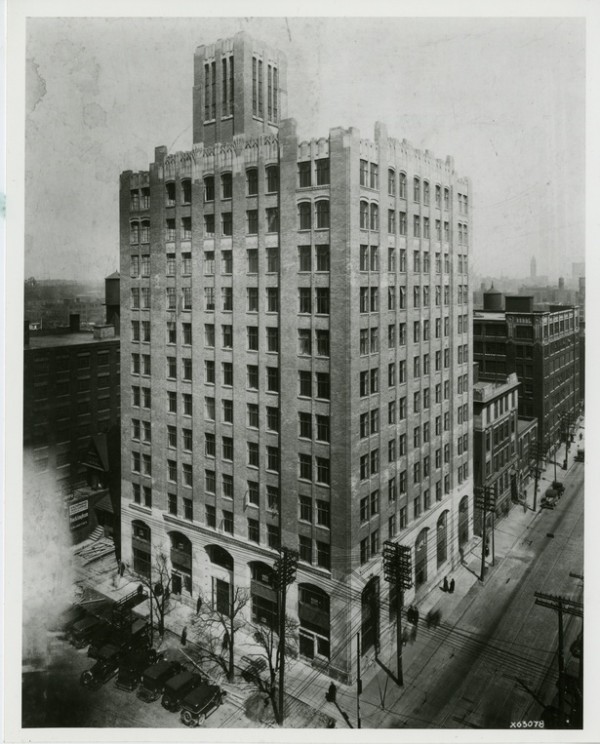
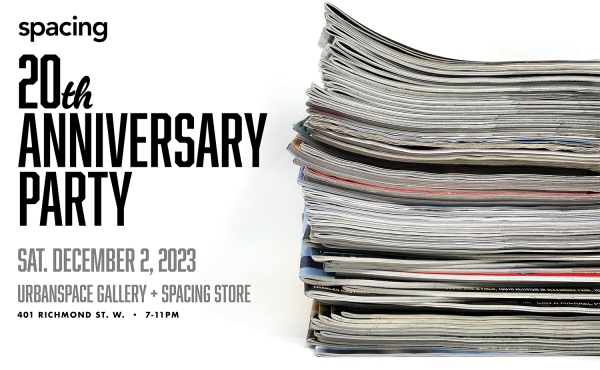

4 comments
What about the so many other much more prominent Art Deco buildings in downtown Toronto? I guess since they’re not designed by Jewish architects they don’t matter.
To BStar —
Firstly, the post is about architect Benjamin Brown who has not been celebrated as a great city builder.
Secondly, the headline might be a tad misleading that the exhibit is about Brown and not so much about Art Deco.
Thirdly, if you want to make slightly hyperbolic statements that take shots at ethnic groups you should be brave enough to leave your real name.
@Matthew Blackett
BStar is not taking shots at any ethnic group but in fact doing and exact opposite. No one should be celebrated because of their religion, religion has nothing to do with anyone’s capabilities. This story has been articled at least three times in less then two weeks because of the current Benjamin Brown exhibition at Urbanspace Gallery, twice in the Toronto Star, the first Toronto Star headline wasn’t a tad misleading, it was very much directly about Benjamin Brown being Jewish. With nearly 100 of his buildings here in Toronto, the University of Toronto educated Benjamin Brown has indeed been celebrated as a great Toronto city builder. Benjamin Brown was active in Toronto in the 1950s when Nathan Phillips (Jewish) was mayor of Toronto. Philip Givens (also Jewish) was mayor of Toronto in 1965 when Toronto’s new city hall and Nathan Phillips Square opened. I mention this because of The Times Of Israel article that makes a point of stating the fact that current mayor John Tory is technically also Jewish, the article also mentions Mel Lastman. None of these men’s achievement’s should be based on their religion.
@Matthew Blackett Isn’t it a tad self righteous of you to suggest BStar should but his or her full or real name in a comments section, not many people put their full or real name in comments sections and why should they because you say so? Anyway, I love Benjamin Brown’s work here in Toronto, his are some of my favorite buildings in the city.
KM: Gotcha. No one should be celebrated because of their religion or ethnicity, especially those who have suffered through discrimination and racism.
As for using your real name in comments: The suggestion is not based in righteousness — it’s about being brave enough to stand behind your own comments.
Lastly — I can see that you are the same person as BStar as you’ve posted from the exact same IP address. That’s why I don’t like it when people don’t post their real names — they can look like multiple people voicing the same opinion. Too bad you got caught.